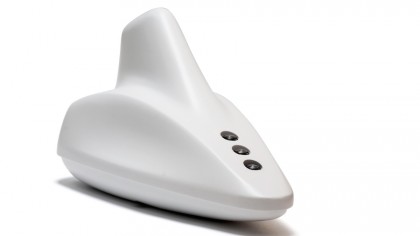A closer look at SigFox: Supercharging the smart city and beyond
The 12 byte message tech that could be revolutionary
Who is supporting SigFox?
Only Samsung Electronics. If an acceptance by device makers is paramount, SigFox hit the jackpot when the South Korean giant both invested in the company and then included the tech in its new IoT platform, ARTIK.
That's not all – South Korea's SK Telecom and Japan's NTT Docomo are also investors, suggesting SigFox could have a big future in Asia, which is slated to quickly become the HQ of the IIoT, both in terms of 'smart' manufacturing plants, and in the production of IIoT sensors and electronics. However, it's Europe that's kicking-off SigFox, whose network already exists in the UK, France, Luxembourg, the Netherlands, Spain, Portugal, Belgium and Denmark.
Does it have limitations?
Capable of transmitting just 100 bits per second and a maximum of 140 messages per object per day at no more than 12 bytes each, SigFox is not for bandwidth-hungry, 'chatty' devices, just those that need to send back occasional data. "Certainly there are limitations with the SigFox solution, particularly around bandwidth, but with a properly designed IoT infrastructure you really shouldn't have a high bandwidth requirement," says Dhunay.
However, the technical limitations of SigFox means it will remain a technology for niche uses only. "Radio frequency has specialised use cases, with limited bandwidth, and without investment in the underlying infrastructure, coverage is likely to remain limited to metro areas," says Phil Williams, Principal Architect, Rackspace. "Even then, with an expectation of billions of connected devices, congestion would likely become a factor."
Although in rural areas SigFox messages can travel 1,000km, though urban areas that drops to single figures. Using the ultra-narrow band radio technology to connect devices to its global network, SigFox is one-directional, and doesn't offer a platform or any kind of managed service – it's just a connectivity technology. That's why it's been quick to market, and that's why it's been the first such technology to gain wide recognition in the industry. But there is a rival.

The rival: Actility
SigFox isn't the only French technology vying to be a staple of the IIoT. Financed by Foxconn, Orange, KPN and Swisscom, Actility's network for large-scale industrial IoT deployments is based on the Long Range Wide Area Network (LoRaWAN) approach. Although both Actility and SigFox are using the license-free, industrial, scientific and medical radio bands, the networks and business models are subtly different.
LoRaWAN is bi-directional and uses adaptive data rate (ADR) so that sensors will automatically communicate at the highest possible data rates after talking to Actility's LoRaWAN network server. "A water meter can therefore move up to 50 kbps, and therefore spend much less time on air when sending a meter measurement, and quickly go back into idle mode, thereby saving significantly on battery life," says Olivier Hersent, the CEO, CTO and Founder of Actility. Compare that to SigFox's 100 bits per second maximum speed. "A SigFox sensor does not support such an adaptive data rate mechanism, and will always transmit at 100 bits per second, using more energy in transmitting the same data."
Sign up to the TechRadar Pro newsletter to get all the top news, opinion, features and guidance your business needs to succeed!
It's also worth noting that while Actility's LoRaWAN is an open approach, SigFox isn't. "SigFox has opted to quickly build a proprietary network, making it less flexible and able to adapt to the rapidly developing IoT market," says Hersent. The business models differ, too, with SigFox in competition with network operators while Actility supplies operators with an all-in-one, cloud-based service called ThingPark.

Which of these scalable, low-energy and high-capacity technologies will ultimately triumph is anyone's guess, but with M2M, smart city, sensor network and industrial automation applications on the rise – and expected to account for most of the 38.5 billion connected devices by 2020 – the smart money will be in close contact with both.
Jamie is a freelance tech, travel and space journalist based in the UK. He’s been writing regularly for Techradar since it was launched in 2008 and also writes regularly for Forbes, The Telegraph, the South China Morning Post, Sky & Telescope and the Sky At Night magazine as well as other Future titles T3, Digital Camera World, All About Space and Space.com. He also edits two of his own websites, TravGear.com and WhenIsTheNextEclipse.com that reflect his obsession with travel gear and solar eclipse travel. He is the author of A Stargazing Program For Beginners (Springer, 2015),
